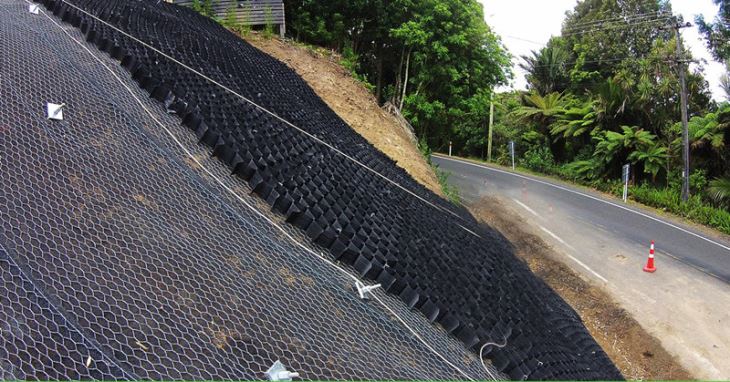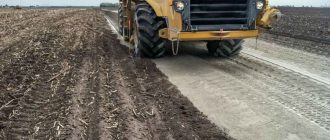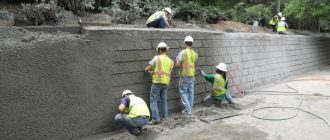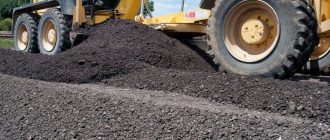
The Ultimate Guide to Soil Stabilization Methods
Soil stabilization is the process of altering and improving the properties of soil to make it more suitable for construction or other uses. It involves various methods and techniques that aim to enhance the overall strength, durability, and load-bearing capacity of the soil.
There are several methods used for soil stabilization, each with its own advantages and limitations. These methods include mechanical techniques such as soil compaction and vibroflotation, as well as chemical methods like cement stabilization and lime treatment. Additionally, geosynthetic materials can be used to reinforce the soil and provide additional stability.
Understanding the different soil stabilization methods is essential for engineering and construction professionals, as it allows them to select the most appropriate technique for a specific project. Factors such as soil type, environmental conditions, and project requirements must be taken into consideration when choosing the right method.
This ultimate guide aims to provide a comprehensive overview of soil stabilization methods, covering everything you need to know. From the basics of soil mechanics to the latest advancements in stabilization techniques, this guide will equip you with the knowledge and understanding to effectively stabilize soil for various applications.
Understanding Soil Stabilization
Soil stabilization is the ultimate goal of various methods and techniques used to improve the strength, durability, and resistance of soil. These methods are employed in construction and civil engineering projects to enhance the properties of soil and make it suitable for the desired purpose.
Soil stabilization methods primarily focus on improving the load-bearing capacity and reducing the settlement of soil. Additionally, they can also enhance soil permeability, reduce erosion, and prevent the detrimental effects of moisture on soil properties.
The methods of soil stabilization can vary depending on the type of soil and the specific requirements of the project. Some common methods include mechanical stabilization, chemical stabilization, and biological stabilization.
Mechanical stabilization involves the use of physical techniques, such as compaction, grading, and reinforcement, to improve the strength and stability of soil. This method is effective for cohesive soils and can significantly enhance their load-bearing capacity.
Chemical stabilization, on the other hand, involves the addition of chemical agents or additives to the soil to enhance its properties. These additives can include lime, cement, fly ash, or chemical polymers. Chemical stabilization is often used for granular soils or soils with low cohesion.
Biological stabilization relies on the use of organic materials, such as vegetation or bio-polymer materials, to improve soil stability. This method is particularly effective in areas where erosion control is a concern.
Understanding soil stabilization methods is crucial for engineers and construction professionals to ensure the success and longevity of their projects. By employing the appropriate method, the soil can be transformed into a stable and reliable foundation for various structures.
Ultimately, soil stabilization plays a vital role in the overall sustainability and safety of construction projects, making it a crucial aspect of any engineering endeavor.
Importance of Soil Stabilization
The ultimate guide to soil stabilization methods focuses on the importance of soil stabilization in various construction projects. Soil stabilization is a crucial process that improves the engineering properties of soil, making it more durable and resistant to erosion, settling, and other natural forces.
Soil stabilization plays a vital role in the construction industry, as it ensures the long-term integrity and stability of foundations, roads, embankments, and other structures. It helps to prevent soil erosion and subsidence, reducing the risk of structural failure and costly repairs.
One of the primary benefits of soil stabilization is its ability to increase the bearing capacity of the soil, allowing it to withstand heavier loads and traffic. By strengthening the soil, stabilization techniques minimize settlement and improve the overall performance of construction projects. This is especially important in areas with poor soil quality or high moisture content, where the ground may be unstable and prone to shifting.
Soil stabilization methods can also enhance the overall durability of the soil, making it more resistant to weathering, erosion, and deterioration. This is particularly crucial in regions with extreme weather conditions or frequent exposure to water, such as coastal areas or flood-prone regions. By stabilizing the soil, construction projects can withstand harsh environmental conditions and reduce the need for maintenance and repairs.
Furthermore, soil stabilization techniques promote sustainable construction practices by reducing the need for importing or disposing of soil materials. By improving the existing soil on-site, construction projects can minimize the use of additional materials and reduce their environmental impact.
In conclusion, soil stabilization is an essential aspect of construction projects. It improves soil strength, stability, and durability, enabling the construction of safe and reliable structures. By implementing effective soil stabilization methods, construction professionals can ensure the long-term success and integrity of their projects while minimizing environmental impact.
Common Soil Stabilization Methods
Soil stabilization is an ultimate technique used to improve the properties and durability of soil. Various methods can be employed to stabilize soil, depending on the specific needs and characteristics of the soil. Here are some common soil stabilization methods:
1. Chemical Stabilization: This method involves the addition of chemicals to the soil to enhance its stability and strength. Common chemicals used for soil stabilization include lime, cement, and fly ash. These chemicals react with the soil particles, causing them to bind together and form a stable structure.
2. Mechanical Stabilization: Mechanical stabilization techniques involve the use of mechanical forces to improve the stability of the soil. This can be achieved through compaction, which involves applying pressure to the soil to decrease its void ratio and increase its density. Other mechanical stabilization methods include soil reinforcement through the use of geotextiles, geogrids, or geocells, which provide additional support and reinforcement to the soil.
3. Biological Stabilization: Biological stabilization methods involve the use of plants and vegetation to stabilize soil. Plant roots help bind the soil particles together and prevent erosion. Additionally, the presence of vegetation helps improve soil structure, water absorption, and nutrient retention.
4. Thermal Stabilization: Thermal stabilization involves the use of heat to stabilize soil. This method is commonly used for treating contaminated soils or soils with high moisture content. Heating the soil can help remove excess moisture and destroy harmful contaminants, resulting in improved soil stability.
5. Electrochemical Stabilization: Electrochemical stabilization is a relatively new method that utilizes electrical currents and the movement of ions to stabilize soil. This method helps increase the soil’s shear strength and reduce its compressibility through the electrochemical reactions that occur between the soil and the applied electrical current.
These are just a few of the common soil stabilization methods used in various construction and engineering projects. The choice of method depends on factors such as the soil type, project requirements, and budget. By employing suitable soil stabilization techniques, engineers can ensure the long-term stability and durability of structures built on unstable soil.
Cement Stabilization: A Comprehensive Overview
When it comes to soil stabilization methods, cement stabilization is one of the most popular and effective techniques. This method utilizes the unique properties of cement to improve the strength and durability of soil, making it suitable for various construction purposes.
Cement stabilization involves the addition of cement to the soil. The cement is mixed thoroughly with the soil, creating a chemical reaction that strengthens the soil and reduces its plasticity. The process helps to increase the load-bearing capacity of the soil, making it ideal for the construction of roads, pavements, and foundations.
One of the key benefits of cement stabilization is its versatility. It can be used on a wide range of soil types, including clay, silt, and sand. The method is particularly useful when dealing with weak or unstable soil conditions, as it offers a cost-effective solution to stabilize the ground and ensure long-term stability.
Another advantage of cement stabilization is its ability to reduce the swell and shrinkage potential of expansive soils. By stabilizing the soil with cement, the volume changes that occur due to moisture content fluctuations are minimized. This helps to prevent ground movement and maintain the integrity of structures built on the stabilized soil.
Cement stabilization is typically carried out using cement-treated base (CTB) or cement-stabilized soil (CSS) methods. CTB involves mixing cement, water, and aggregate with the soil, while CSS uses a higher percentage of cement to achieve greater stabilization. These methods can be tailored to suit specific project requirements, making them suitable for a wide range of applications.
It’s worth noting that cement stabilization requires careful planning and execution. Factors such as the type and proportion of cement used, the moisture content of the soil, and the duration of the curing process can significantly impact the effectiveness of the stabilization. Therefore, it is essential to consult with soil stabilization experts to ensure the optimal design and implementation of the cement stabilization method.
| 1. Increased strength and durability of soil | 1. High initial cost |
| 2. Versatility in addressing different soil types | 2. Requires careful planning and execution |
| 3. Reduces swell and shrinkage potential | 3. Longer curing time compared to other methods |
| 4. Cost-effective solution for stabilization | 4. Environmental concerns related to cement production |
In conclusion, cement stabilization is an ultimate method for soil stabilization that offers numerous advantages. It is a versatile and cost-effective solution for improving the strength and durability of soil. However, careful planning and execution are essential to ensure successful outcomes. By considering the specific requirements of the project and consulting with experts, cement stabilization can be an effective solution for achieving long-term stability in construction projects.
Lime Stabilization: Benefits and Best Practices
Lime stabilization is an ultimate method of soil stabilization that offers numerous benefits and is widely used in construction projects. By using lime, soil can be stabilized, improving its strength and durability.
Some of the key benefits of lime stabilization include:
- Increased soil strength: Lime reacts with the soil particles, forming chemical bonds that increase the soil’s strength and load-bearing capacity.
- Improved durability: Lime stabilizes soil by reducing its permeability, making it resistant to erosion and moisture-related damage.
- Reduced shrinkage and swelling: Lime stabilizes soil by reducing its shrink-swell potential, minimizing foundation settlement and other problems associated with soil movement.
- Cost-effective: Lime stabilization is a cost-effective method as it makes use of lime, a readily available and affordable material.
To achieve the best results with lime stabilization, it is important to follow certain best practices:
- Proper testing: Before applying lime, it is crucial to conduct soil tests to determine the appropriate lime content and mixing procedures.
- Gradation control: It is important to control the gradation of the soil to ensure a consistent mixture that will result in effective stabilization.
- Thorough mixing: The lime should be thoroughly mixed with the soil, ensuring uniform distribution of lime particles throughout the soil matrix.
- Moisture control: The soil should have the right moisture content during the lime stabilization process. Excess moisture can hinder the effectiveness of lime stabilization.
- Proper curing: After lime stabilization, the soil should be properly cured, allowing sufficient time for the lime to react and stabilize the soil.
In conclusion, lime stabilization is a highly effective method of soil stabilization that offers numerous benefits. By following the best practices mentioned above, construction projects can achieve optimal results and ensure long-lasting stability of the soil.
Chemical Stabilization: Enhancing Soil Performance
Chemical stabilization is one of the ultimate methods for enhancing soil performance. This guide will provide you with everything you need to know about this effective technique.
- What is Chemical Stabilization?
- Why is Chemical Stabilization Important?
- Types of Chemical Stabilization Agents
- Lime: Lime is commonly used to stabilize clay soils. It helps in the formation of calcium silicates and other compounds, improving soil strength and reducing its plasticity.
- Cement: Cement stabilizes sandy and silty soils by binding the particles together. It creates a cementitious matrix that increases the soil’s strength and stability.
- Bitumen: Bitumen is often used to stabilize granular soils by preventing the penetration of water. It creates a waterproof layer that enhances the soil’s load-bearing capacity.
- Polymer-based Stabilizers: Polymer-based stabilizers are synthetic chemicals that improve soil properties by enhancing cohesion and reducing water infiltration.
- Benefits and Limitations of Chemical Stabilization
- Improved soil strength and stability
- Reduction in soil erosion
- Increased resistance to environmental influences
- Cost-effective compared to other soil stabilization methods
- Requires expertise in handling and applying chemicals
- May not be suitable for highly organic or expansive soils
- Long-term durability is dependent on maintenance and environmental conditions
- Conclusion
Chemical stabilization involves the addition of specific chemicals to soil to improve its engineering properties. These chemicals react with the soil particles, altering their characteristics and enhancing their performance.
Chemical stabilization is crucial in construction and engineering projects, as it helps improve the soil’s load-bearing capacity, reduce its susceptibility to erosion, and enhance its overall stability. This method is commonly used in road construction, landfills, and other infrastructure developments.
There are various chemical stabilization agents available, each with its specific function. Some common agents include:

Using chemical stabilization methods offers several advantages, including:
However, chemical stabilization also has certain limitations, such as:
Chemical stabilization is an essential method for enhancing soil performance in construction and engineering projects. It offers several benefits, including improved load-bearing capacity and reduced soil erosion. However, it is crucial to consider the specific characteristics of the soil and the limitations of chemical stabilization before implementing this method.
Geotextile Stabilization: Reinforcing the Soil
Geotextile stabilization is an ultimate method of soil stabilization that involves the use of geotextiles to reinforce the soil. Geotextiles are permeable fabrics made of synthetic materials, such as polyester or polypropylene, which are designed to improve the performance and durability of soil structures.
The primary purpose of geotextile stabilization is to enhance the strength and stability of the soil, especially in areas with weak or loose soil conditions. By placing geotextiles within or beneath the soil, it creates a barrier that distributes the applied loads and reduces stress concentrations. This helps to prevent soil erosion and the detrimental effects of heavy traffic or dynamic loads.
Geotextile stabilization can be used in various applications, including road construction, pavement reinforcement, slope stabilization, and retaining wall construction. In road construction, geotextiles are often used to separate the subbase and the base layers, preventing the mixing of different materials and providing additional support. In slope stabilization, geotextiles can help increase the stability and prevent soil or rockslides.
The installation process of geotextile stabilization involves the careful placement of the fabric over the soil surface or within the soil layers. The fabric is then secured with the help of pins or staples to ensure proper anchoring. It is important to properly overlap the geotextile sheets to create a continuous and seamless barrier, enhancing the overall effectiveness of the stabilization method.
| – Improves soil strength and stability. | – Requires proper installation for effective results. |
| – Reduces soil erosion and material loss. | – May be susceptible to damage during installation. |
| – Enhances the performance and longevity of soil structures. | – May require additional maintenance and monitoring. |
| – Provides cost-effective solutions in soil stabilization. | – May have limitations in certain soil conditions or applications. |
Overall, geotextile stabilization is a valuable method for reinforcing the soil and improving the performance of various soil structures. By properly installing and maintaining geotextiles, it is possible to achieve long-term stability and durability in soil stabilization projects.
Soil Stabilization for Road Construction: Key Considerations
Soil stabilization is an essential process in road construction that involves improving the properties of the soil to enhance its strength and durability. This ultimate guide provides valuable insights into different methods of soil stabilization and their applications, helping you make informed decisions for your road construction projects.
When it comes to soil stabilization for road construction, there are several key considerations to keep in mind:
1. Soil Assessment: Before embarking on any stabilization method, it is essential to thoroughly assess the soil properties, such as its composition, moisture content, and bearing capacity. This evaluation helps determine the appropriate stabilization technique.
2. Stabilization Techniques: There are various soil stabilization techniques available, including mechanical stabilization, chemical stabilization, and modification with additives. Each method has its advantages and limitations, and the choice depends on factors such as soil type, traffic load, and project budget.
3. Environmental Impact: While achieving stability is crucial, it is equally important to consider the environmental impact of soil stabilization methods. Some techniques can have adverse effects on the ecosystem and groundwater quality. Sustainable and eco-friendly options should be prioritized whenever possible.
4. Cost-Effectiveness: Cost is a significant factor in any construction project. It is essential to evaluate the cost-effectiveness of soil stabilization methods, considering factors such as initial expenses, maintenance requirements, and lifespan of the stabilized soil.
5. Monitoring and Quality Control: Regular monitoring and quality control measures are essential to ensure the effectiveness and durability of soil stabilization. Adequate testing and inspection during the construction process help identify any potential issues and implement corrective measures promptly.
6. Expertise and Training: Proper implementation of soil stabilization techniques requires expertise and training. It is crucial to engage experienced professionals who can assess the soil conditions accurately, choose the appropriate stabilization method, and ensure proper execution of the project.
Conclusion:
Soil stabilization plays a critical role in road construction, providing enhanced durability and strength to the road infrastructure. Understanding the key considerations discussed in this guide can help you make informed decisions and achieve successful soil stabilization outcomes for your road construction projects.
Environmental Impacts of Soil Stabilization
Soil stabilization is a crucial technique in construction and engineering projects to improve the strength and durability of soil. While it offers numerous benefits, it’s important to consider the environmental impacts of these stabilization methods.
1. Chemical usage: Some methods of soil stabilization involve the use of chemicals such as lime or cement. These chemicals can have a negative impact on the environment if not managed properly. They can contaminate groundwater and soil, leading to ecosystem disruptions and health hazards.
2. Erosion: During the stabilization process, the soil may be temporarily exposed to erosion if it is not protected adequately. This can result in the loss of topsoil and vegetation, leading to reduced biodiversity and increased sedimentation in nearby water bodies.
3. Energy consumption: Soil stabilization techniques often require the use of heavy machinery and equipment, leading to increased energy consumption and carbon emissions. This can contribute to air pollution and climate change if sustainable practices are not followed.
4. Waste generation: The process of soil stabilization can generate waste materials such as excess soil, chemicals, or construction debris. If not managed properly, these waste materials can pollute the environment and create disposal challenges.
5. Habitat disruption: In some cases, soil stabilization methods may require the clearing of vegetation and the destruction of natural habitats. This can have a negative impact on local flora and fauna, leading to a loss of biodiversity and ecological imbalance.
To mitigate these environmental impacts, it is crucial to follow sustainable practices during soil stabilization projects. This includes proper chemical management, erosion control measures, energy-efficient machinery, waste recycling or disposal, and the implementation of habitat restoration measures.
By considering and minimizing the environmental impacts of soil stabilization, we can ensure that these methods are used responsibly and contribute to sustainable development.
Frequently asked questions:
What is soil stabilization?
Soil stabilization is a technique used to improve the properties of soil, making it suitable for construction purposes. It involves different methods and techniques aimed at increasing the strength, durability, and load-bearing capacity of soil.
Why is soil stabilization important?
Soil stabilization is important because it helps to prevent soil erosion, reduces settlement, and improves the load-bearing capacity of soil. It ensures that the soil can support the structures built on it and prevents damage caused by unstable soil conditions.
What are the different soil stabilization methods?
There are several soil stabilization methods, including mechanical stabilization, chemical stabilization, and biological stabilization. Mechanical methods involve compacting the soil and adding reinforcements, chemical methods involve adding materials to improve the soil’s properties, and biological methods involve using plants and vegetation to stabilize the soil.
Can you explain the process of mechanical soil stabilization?
Mechanical soil stabilization involves compacting the soil and adding reinforcements to improve its stability and load-bearing capacity. Compaction is achieved by applying pressure to the soil, reducing its volume and increasing its density. Reinforcements, such as geotextiles or steel rods, are added to provide additional strength to the soil.
What are some common materials used for chemical soil stabilization?
Some common materials used for chemical soil stabilization include lime, cement, fly ash, and bitumen. These materials are mixed with the soil to improve its properties and increase its strength and stability. They react with the soil particles, creating bonds that help to bind the soil together and improve its load-bearing capacity.
What is soil stabilization?
Soil stabilization is the process of modifying or improving the properties of soil in order to enhance its strength, stability, and durability. This is done to make the soil suitable for construction purposes.
What are the common methods of soil stabilization?
The common methods of soil stabilization include mechanical methods such as compaction and consolidation, chemical methods such as the use of stabilizing agents like lime and cement, and biological methods such as using vegetation to stabilize the soil.





